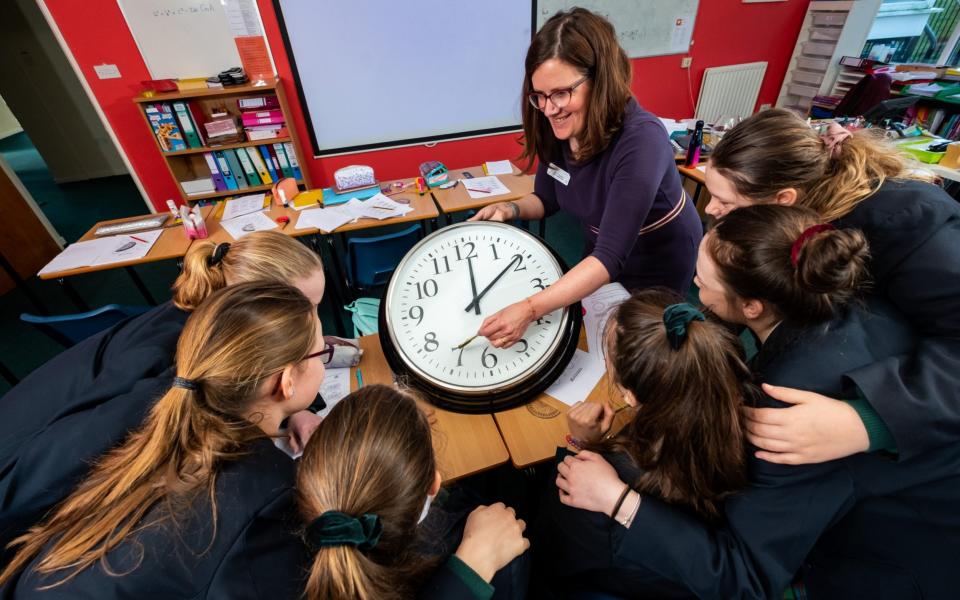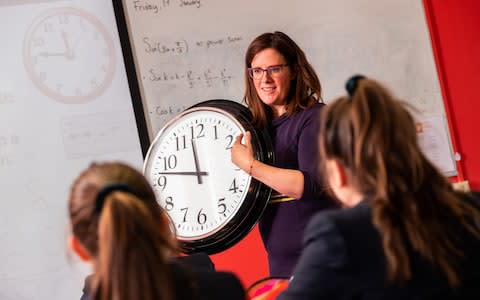Time for action at school where 13-year-olds couldn't read a clock

It has long been a rite of passage for young children; the moment they first begin to grasp how to tell the time as their parents patiently explain the significance of the “big hand” and the “little hand”.
But the ubiquity of mobile phones and tablets, with their digital 24-hour clock, is threatening to make the art of telling the time from a traditional timepiece redundant.
So much so that a school in Scotland has found that pupils as old as 13 are unable to tell the time from the ‘analogue’ clocks hanging in classrooms and corridors.
Teachers at Kilgraston School in Perthshire began to notice that more and more of its senior pupils had no concept of how to read a clock, or at best struggled to do so.
The problem had become so acute that it had even begun to threaten the girls’ exam prospects.
Dorothy MacGinty, head of Kilgraston, said: “Pupils sit in examination rooms with analogue clocks and we have found some who struggle to understand how much longer they have left for an exam because they cannot read the clock face.”
Now the school, in the town of Bridge of Earn, has begun to teach pupils to read a clock the old fashioned way, without resorting to their mobile phones.
In fact mobiles and tablets have been banned during school hours to encourage the girls to look at the clocks around the school.

Teachers began to notice that it was taking longer than normal to teach junior pupils how to tell the time, either because they were not being taught at home or were not receiving “regular reinforcement” from looking at their watches.
However, it quickly became clear the problem was not limited to the younger pupils.
Mrs MacGinty told The Telegraph: “Our head of maths, Mrs Stephanie Speed, mentioned to me that she was also becoming increasingly concerned as more and more senior girls who were joining the school lacked this basic skill.
“Additionally there are maths applications that need this skill. It’s a fundamental numeracy life skill. We are encouraging parents and guardians to buy wristwatches for girls from aged five.”
It’s certainly not a matter of lack of intelligence.
These are pupils, after all, who have happily mastered complex calculus and equations that would stump the majority of adults.
But just as, following the introduction of domestic electricity, there must have been a generation of children who had no idea how to light the gas lamps their parents had grown up with, the paradigm shift from analogue to digital technology has created a divide in everyday knowledge.
Mrs MacGinty insists however that there are some skills that should transcend the generations.
“Society is changing and the curriculum should change to reflect this,” she said. “But some skills are too important to ignore.
“For example, we are still teaching pupils to read rail and bus timetables, even though it is no longer in the senior school maths syllabus, because it is important that pupils understand how to read these.”
She added: “Having the ability to understand the movement of the minute hand and the hour hand around the face of a clock gives young people a tangible understanding of the passing of time, not just numbers changing on a digital screen.”

Since many of the pupils at the independent day and boarding school, founded in 1930, do not own a wrist watch they were initially reluctant about being separated from their precious mobile phones during the day.
But it appears the rule has had the desired effect of encouraging them to look up at a clock to tell the time.
“Initially I felt anxious about learning to read the time,” said one 13-year-old. “But when I realised that I was not alone learning it didn’t seem to be as scary. Now that I understand it, and we don’t carry phones with us, I find myself using the classroom and corridor clocks to read all the time.”
And as Mrs MacGinty says: “Wouldn’t it be very sad if we got to the point where a whole generation of young people looked at Big Ben in puzzlement?”

 Yahoo News
Yahoo News 